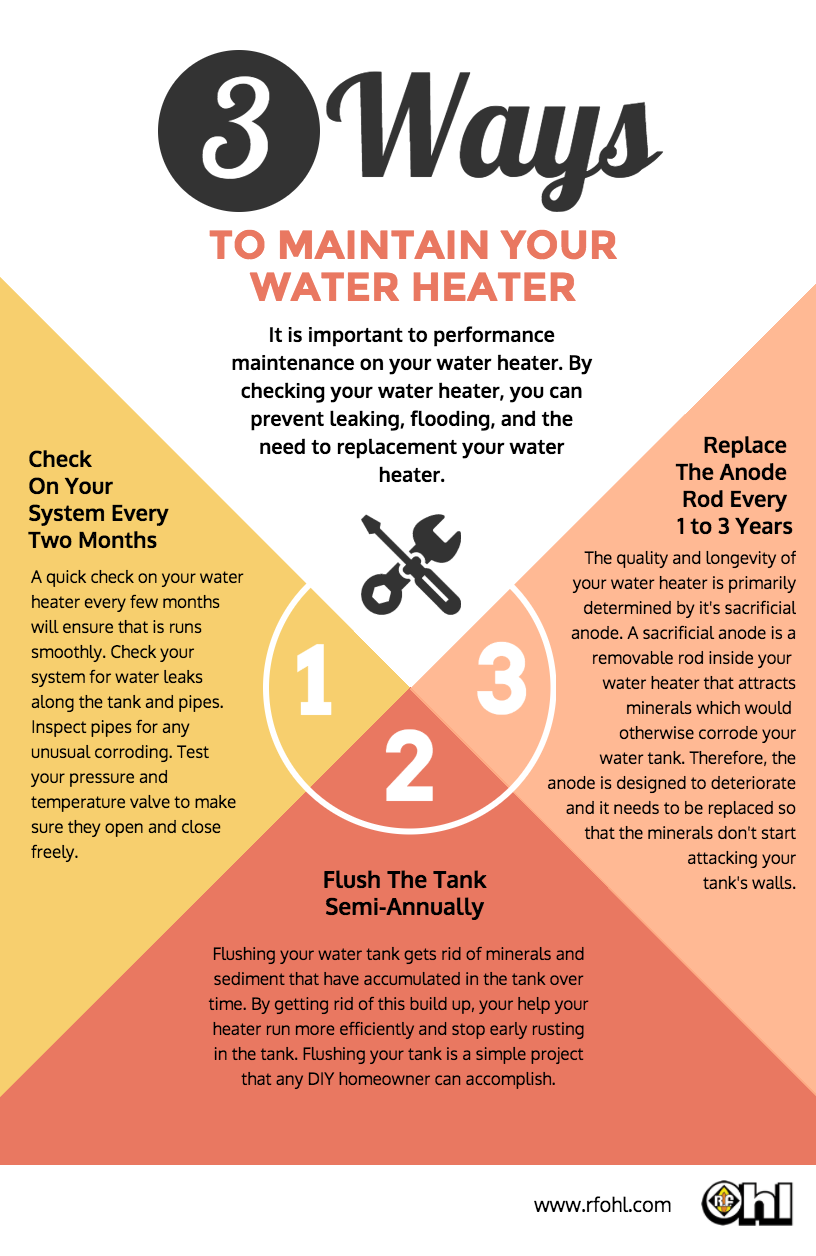Water Heater Inspection Guide
It is important to perform regular maintenance on your water heater to keep it running smoothly and extend it’s lifespan. For the DIY homeowner, water heater maintenance is an easy task. If you have no idea how to get stared, the steps below will explain all you need to know about taking care of your water heater. Of course you can always call us, we service Gilbert PA and most towns in Northeastern PA. We will be happy to help you.
Every few months:
About every two months or so you should do a quick check on your water heater. Inspect it for water leaks along the tank and pipes and check the plumbing joints for corrosion. If you have a gas water heater check the condition of your flex hose and the couplings and make sure there are no flammable materials in the area. Also, test your temperature and pressure relief valve to make sure they open and close freely.
Every six moths to a year:
Depending on the type and model of your water heater, you should flush the tank semi-annually or annually. Flushing your water tank gets rid of minerals and sediment that have settled on the bottom of your tank. Doing this annually will help your system work more efficiently and increase the lifespan of your water heater. Follow these steps to safely clean your water heater.
Prep your water heater. Before you begin, you have to turn off the main power source. For a gas heater, the thermostat is a red knob on the outside of the heater that can be switched off. For an electrical heater, you turn the power off through the breaker or fuse box. Even after completing these steps, you should keep in mind that the water in your tank is still very hot. It is best to use up some of the hot water, or let it cool for a few hours before continuing.
Get ready to drain the water. Once the water has cooled and you are ready to flush it, you need to shut off the water supply at the cold water shut off valve. Next, open a nearby hot water tap and leave it open to let air enter the tank as it empties. Then, find the drain valve near the bottom of the water heater and attach a garden hose. An ordinary garden hose will work well as long as it can reach a drain or a sump pit. Whether you fed the water to a drain or sump pit, make sure it is lower than the drain valve because gravity moves water downward.
Drain and check the water. When everything has been set up, you can open the drain valve. After a few gallons have drained, collet some of the water in a bucket to inspect it. Run the water through a filter to see the levels of sediment in your tank. If there is not a lot of sediment, you can drain a few more gallons and then stop. This will usually be the result if you do regular maintenance on your water heater. However, if there is a high amount of sediment you will need to drain the tank completely. As you flush the tank, occasionally turn the cold water back on to stir up and remove any stubborn sediment.
Refilling the tank. When you are done, you can refill the tank by closing the drain valve and turning the water back on. However, you should wait until your tank is completely full before turn the power supply back on. You can tell if the tank is full by checking the hot water tap that was left on. Once the water is coming out at a full stream, the tank is full.
Once a year:
It is important to check and replace the sacrificial anode in your water heater to keep it from rusting inside. Changing the rod is a fairly simple and inexpensive procedure that is laid out in the steps below.
Prep your water heater. Turn off the power supply to your heater. If you have an electric heater, turn off the circuit breaker. If you have a gas heater, turn the gas control valve to the lowest setting or the “vacation” setting. Next, close the cold water shut off valve and turn on the hot water at a nearby faucet to relieve pressure. Then, open the drain valve near the bottom of the tank to drain a few gallons of water. Be careful, as the water will be hot. Draining your tank will make clear any remaining water from the hot water pipes that are above the level of the top of the tank. It will also give you a chance to inspect it your water for rust and determine if additional maintenance should be done.
Remove the anode. Your anode is inside your water heater and can usually be accessed through the top or sometimes the side. The anode is made of a metal that corrodes quicker than the the metal inside your tank. Therefore, the anode attracts minerals that would otherwise corrode your heater, hence the name “sacrificial” anode. To remove the rod, use a properly sized wrench or socket to turn it counter-clockwise until it clears the threads. Once the anode is lose, lift it out of the tank for inspection.
Inspect the anode. Since the anode is made to attract corrosive materials, the anode is designed to deteriorate. Some pitting and cordons is to be expected. However, if there are large chunks of metal missing or entire portions of it’s length are gone, it should be replaced. If you don’t replace the rod, it will stop attracting minerals and they will go directly to your water heater’s tank making it corrode from within.
Choosing a new anode. Replacing your anode is not very expensive and a new rod can be found at plumbing or hardware store. There are many types of anodes so make sure you find one that works best with your water heater. Most importantly, make sure the length of your rod is right. You should measure the area of clearance above your tank to ensure that you can slide the rod in and out with enough room.
Replacing the anode. Once you have the right anode, reinstalling it is simple. Wrap the threads of the new anode with PTFE thread sealing tape. Then place it back in the tank and tighten the rod.
Wrapping up. Once the rod is back in, you can turn the cold water and the power supply back on. You may also want to write down the date of your replacement for the future, or set a reminder in your calendar to check the rod again in a few years.
By keeping up with these maintenance routines, you can help your water heater run efficiently and increase it’s lifespan. Taking the time to perform this small amount of maintenance will save you from repairs, leaks, and even floods or replacements in the future. Need help with your water heater? R.F. Ohl services water heaters in Northeastern PA.

